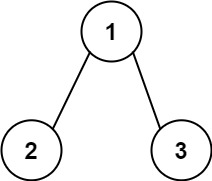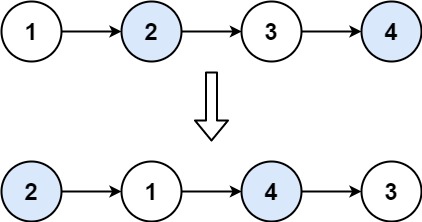Given the head of a singly linked list, reverse the list, and return the reversed list.
Example 1:

Input: head = [1,2,3,4,5] Output: [5,4,3,2,1]
Example 2:

Input: head = [1,2] Output: [2,1]
Example 3:
Input: head = [] Output: []
Constraints:
- The number of nodes in the list is the range
[0, 5000]. -5000 <= Node.val <= 5000
Idea: 背口诀
reverse LinkedList 口诀: create newHead and next next -> head.next -> newHead.next -> head -> next
Solution:
/**
* Definition for singly-linked list.
* function ListNode(val, next) {
* this.val = (val===undefined ? 0 : val)
* this.next = (next===undefined ? null : next)
* }
*/
/**
* @param {ListNode} head
* @return {ListNode}
*/
var reverseList = function(head) {
// empty or only one node
if (head === null || head.next === null) return head;
let newHead = new ListNode();
let next = new ListNode();
while (head !== null) {
// next helper create
next = head.next;
// disconnect, and point to newHead.next
head.next = newHead.next;
// move newHead.next to head
newHead.next = head;
// move head to next location
head = next;
}
return newHead.next;
};








